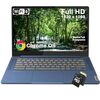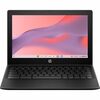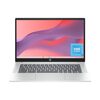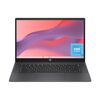Tips and Tools to Choose or Build the Right Linux Distro for You
There are hundreds of Linux distributions, an overwhelming number if you are new to Linux and don't know where to start. This article contains tips and points to further resources to guide new users in choosing the right distro.
What Type of User are You?
Before you start looking for another operating system, make a list of the things you currently do on your computer and the programs you use. Basically, you can do anything on Linux you can do on other operating system, nonetheless your favorite applications may just not be available for it.
If you don't have to stick to certain programs, e. g. for professional reasons, and are not a hardcore gamer, there is probably an alternative available for Linux, that provides all the features you need.
So if your specific requirements don't rule out using Linux, read on about things to consider and resources to help making a choice.
Ask Friends and Colleagues
According to estimates of the Linux Counter (now defunct) there are currently more than 70 million people worldwide who run Linux on one or more machines. Thus, chances that you know a Linux user are not too bad.
In my experience people who use Linux do it deliberately, are passionate about it and generally tech savvy, so don't hesitate to ask them for help on choosing the most suitable distro for you. Make sure you know what you want and need before though.
Check which Distro Supports Your Hardware
Hardware support is obviously an important consideration and often heard as an argument against using Linux. I'd argue that Linux hardware support is very good in general and if you choose one of the major distributions you should be pretty safe.
On the other hand, you may run into trouble with external devices connected to your computer, like printers, scanners or phones as vendors often don't provide drivers for Linux.
Many Linux distributions offer information on supported hardware on their Web sites, search for DISTRONAME hardware support and you'll find results like the following:
- Fedora Hardware Compatibility List
- Ubuntu Hardware Support
- Developer Hardware - The Chromium Projects
Or just go to linux-drivers.org, a great resource to find Linux hardware compatibility lists and information on Linux drivers for several device categories.
Tools for Choosing and Testing
The Linux Distro Picker is a handy online tool that asks for your specific preferences and picks a suitable distro accordingly, also listing alternatives sorted by match score. A good way to narrow down your choices.
If you prefer a more traditional decision flowchart the /g/ OS Guide from 4chan's technology board is for you. It guides you on your way to make a choice from dozens of operating systems, many of them Linux based, by asking easy to answer questions.
Provided you found one or more distros that seem to be a good fit, I highly recommend testing them before installation on your computer. Many distributions can be booted from CD, DVD or USB drive. Check out the LiveCD List for available distros and UNetbootin or LinuxLive USB Creator for creating bootable media.
Alternatively you can download an image of your preferred distro and test it using virtualization software like VirtualBox.
Build Your Own
Building your own distro may sound like a crazy idea to people new to Linux, but can make a lot of sense, for example if you want to create a distributable system for demonstrating software.
Again there are several tools that help you walk this path, some of them listed below.
- SUSE Studio
- is an online tool with which you can build openSUSE and SLED based systems from your browser and export them as a Virtual machine, Live USB Disk, CD/DVD-ROM or Hard Disk Image.
- Slax
- is a Live distribution based on Slackware. It also lets you choose the software packages to include from within your browser and thus easily customize your installation.
- Revisor
- is a native application to create and customize your own Fedora based Linux installation and live media.
- Ubuntu Builder
- is a native application to create and customize your own Ubuntu based distribution.
- Linux Live scripts
- is a set of shell scripts to create your own bootable Live Linux from an already installed Linux distribution.
If the tools above do not offer the level of customization you are looking for and you really are an advanced user, you've probably heard of the Linux From Scratch project, which provides step-by-step instructions for building your own custom Linux based system, entirely from source code.
Conclusion
Choosing the best Linux distribution for one's needs is not an easy task. I myself have used different systems including SUSE, Red Hat, and Ubuntu, each of which for several years on desktop computers and tried out others including netbook distros like UNR, Moblin/Meego, Bodhi, PeppermintOS and Joli OS.
From my experience I can tell that there are very usable Linux distributions well suited for both new and advanced users. My recommendation for those new to Linux is to go with one of the major distributions at first and install it as an additional boot option. In the end the only way to find out whether it's right for you, is to actually use it.
• Linux Distribution Guide Howto
To be informed of new posts, subscribe to the RSS feed or follow Linux Netbook on Facebook.
Affiliate Disclosure: External links on this website may contain affiliate IDs, which means that I earn a commission if visitors make a purchase via such a link. For details, see the disclosure page.



